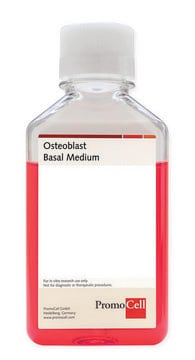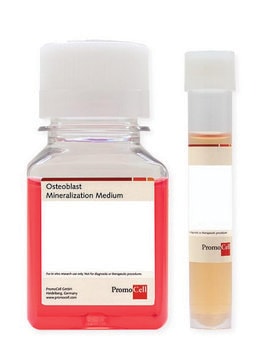C-12720
Human Osteoblasts (HOB)
500,000 cryopreserved cells
Synonyme(s) :
HOB cells
About This Item
Produits recommandés
Source biologique
human bone (knee and hip joints)
Conditionnement
pkg of 500,000 cells
Morphologie
(osteoblasts)
Technique(s)
cell culture | mammalian: suitable
Conditions d'expédition
dry ice
Température de stockage
−196°C
Description générale
Origine de la lignée cellulaire
Application
Qualité
Avertissement
Procédure de repiquage
Autres remarques
Produits recommandés
Clause de non-responsabilité
Code de la classe de stockage
12 - Non Combustible Liquids
Classe de danger pour l'eau (WGK)
WGK 2
Point d'éclair (°F)
Not applicable
Point d'éclair (°C)
Not applicable
Certificats d'analyse (COA)
Recherchez un Certificats d'analyse (COA) en saisissant le numéro de lot du produit. Les numéros de lot figurent sur l'étiquette du produit après les mots "Lot" ou "Batch".
Déjà en possession de ce produit ?
Retrouvez la documentation relative aux produits que vous avez récemment achetés dans la Bibliothèque de documents.
Articles
Primary human osteoblasts and media for the optimal growth and mineralization of human osteoblast cultures. Protocols for handling, cell passaging, media, and product use.
Yeast plasmid selection: Utilizes auxotrophic yeast strains for plasmid selection, enabling growth on synthetic media for better yield.
Overview of primary cells and media usage in biomedical culture applications highlights differences from cell lines.
Contenu apparenté
Cell culture protocol used to differentiate primary human osteoblasts into bone cells in 2-3 weeks.
Notre équipe de scientifiques dispose d'une expérience dans tous les secteurs de la recherche, notamment en sciences de la vie, science des matériaux, synthèse chimique, chromatographie, analyse et dans de nombreux autres domaines..
Contacter notre Service technique






